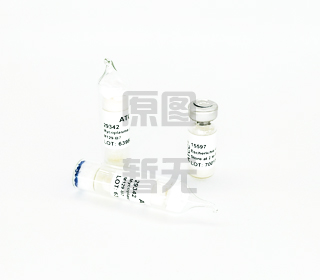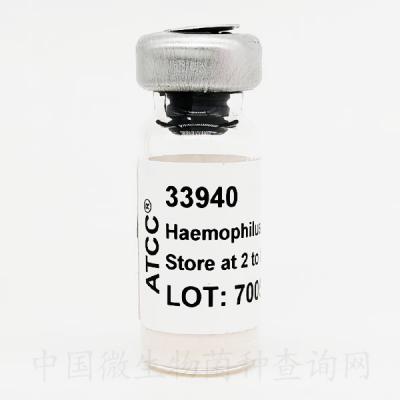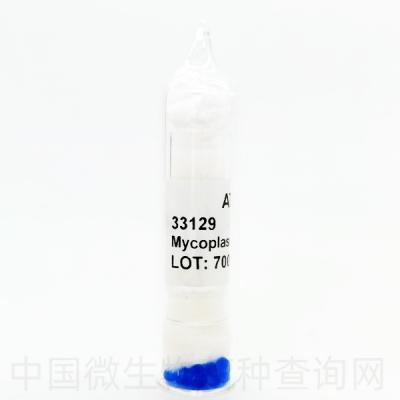
Cutaneotrichosporon cutaneum (de Beurmann et al.) Liu et al.
28592 ™
An ampoule containing viable cells (may include spores and mycelia) suspended in cryoprotectant.
Product categoryFungi
Product typeYeast
Classification Fungi, Dikarya, Basidiomycota, Agaricomycotina, Tremellomycetes, Trichosporonales, Trichosporonaceae, Cutaneotrichosporon
Strain designation CBS 2466 [CCRC 21675, FMJ 15013, IFO 1198, JCM 1462, NBRC 1198, NCYC 444, NRRL Y-1490, VTT C-74033]
Type strain
Yes
Genome sequenced strain
Yes
Isolation source
Probably from clinical specimen
Product format
Freeze-dried
Deposited As Trichosporon beigelii (Kuchenmeister et Rabenhorst) Vuillemin
Strain Designations菌株別名 CBS 2466 [CCRC 21675, FMJ 15013, IFO 1198, JCM 1462, NCYC 444, NRRL Y-1490, VTT C-74033]
Application Biomedical Research and Development Material
Biosafety Level生物安全等級 2
Biosafety classification is based on U.S. Public Health Service Guidelines, it is the responsibility of the customer to ensure that their facilities comply with biosafety regulations for their own country.
Product Format 提供形式freeze-dried
Storage Conditions Frozen保藏方法: -80℃ or colder
Freeze-Dried凍干物: 2℃ to 8℃
Live Culture活菌: See Propagation Section
Type Strain模式菌株 yes
Preceptrol? no
Genome Sequenced Strain Yes
Comments注釋 Genome sequencing strain (RIKEN Center for Life Science Technologies, Japan)
Medium培養(yǎng)基 ATCC? Medium 28: Emmons' modification of Sabouraud's agar
ATCC? Medium 200: YM agar or YM broth
Growth Conditions生長條件
Temperature培養(yǎng)溫度: 24℃ to 26℃
Atmosphere需氧情況: Typical aerobic
Name of Depositor CBS
Chain of Custody來源國家 ATCC <-- CBS <-- E.A.R.F. Bandet (Geotrichoides cutaneus)
Isolation分離源 Probably from human clinical specimen Cross
References參考文獻 Nucleotide (GenBank) : AF075483 26S ribosomal RNA gene, partial sequence Nucleotide (GenBank) : AF218980 Trichosporon cutaneum strain ATCC 28592T 5.8S ribosomal RNA gene, Nucleotide (GenBank) : BCKU01000000 Trichosporon cutaneum strain JCM 1462, whole genome shotgun sequencing project References Lodder J. The yeasts: a taxonomic study. 2nd ed.
Amsterdam: North-Holland; 1970. Peelen S, et al. Conversion of phenol derivatives to hydroxylated products by phenol hydroxylase from Trichosporon cutaneum. A comparison of regioselectivity and rate of conversion with calculated molecular orbital substrate characteristics. Eur. J. Biochem. 227: 284-291, 1995. PubMed: 7851397
Fell JW, et al. Biodiversity and systematics of basidiomycetous yeasts as determined by large-subunit rDNA D1/D2 domain sequence analysis. Int. J. Syst. Evol. Microbiol. 50: 1351-1371, 2000. PubMed: 10843082
King DS, Jong SC. A contribution to the genus Trichosporon. Mycotaxon 6: 391-417, 1977. Scorzetti G, et al. Systematics of basidiomycetous yeasts: a comparison of large subunit D1/D2 and internal transcribed spacer rDNA regions. FEMS Yeast Res. 2: 495–517, 2002. PubMed: 12702266
Guo LN, et al. Three-locus identification, genotyping, and antifungal susceptibilities of medically important Trichosporon species from China. J. Clin. Microbiol. 49: 3805-3811, 2011. PubMed: 21900517
Araujo Ribeiro M, et al. Molecular identification and susceptibility testing of Trichosporon isolates from a Brazilian hospital. Rev Iberoam Micol 25: 221-225, 2008. PubMed: 19071890
Sugita T, et al. Sequence analysis of the ribosomal DNA intergenic spacer 1 regions of Trichosporon species. J. Clin. Microbiol. 40: 1826-1830, 2002. PubMed: 11980969
Chen YC, et al. Polymorphic internal transcribed spacer region 1 DNA sequences identify medically important yeasts. J. Clin. Microbiol. 39: 4042-4051, 2001. PubMed: 11682528
Chen YC, et al. Identification of medically important yeasts using PCR-based detection of DNA sequence polymorphisms in the internal transcribed spacer 2 region of the rRNA genes. J. Clin. Microbiol. 38: 2302-2310, 2000. PubMed: 10834993





